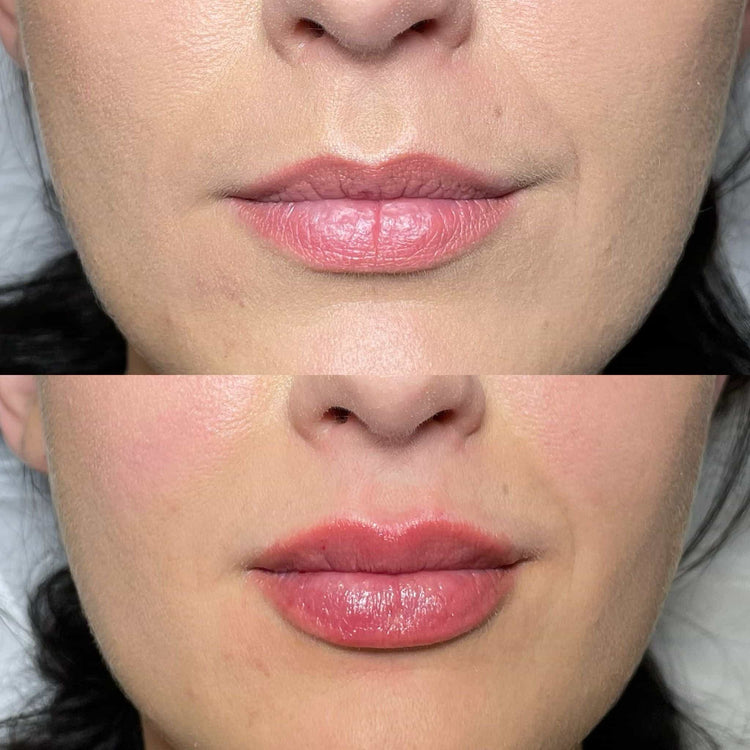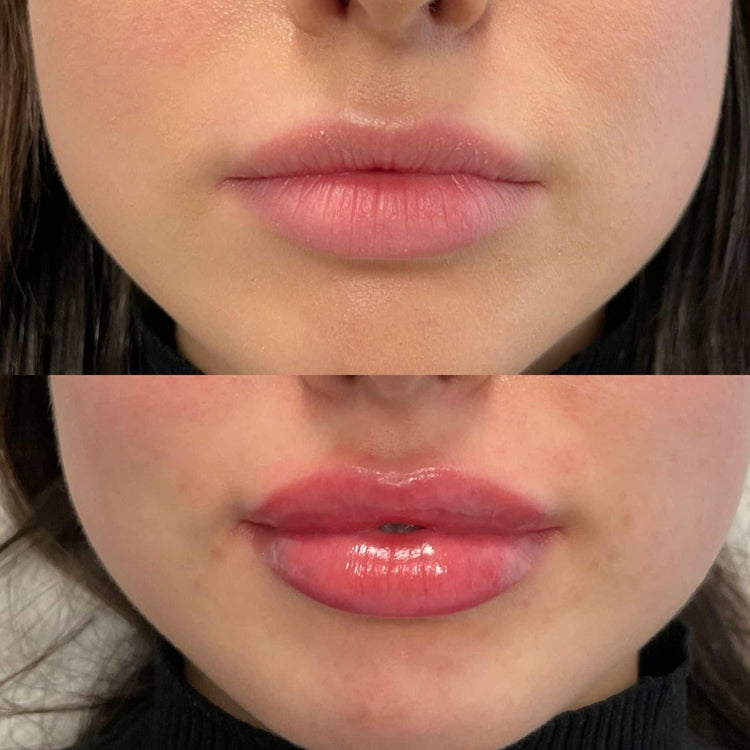Reasons for Increased Popularity
Lip fillers have experienced a surge in popularity in recent years, becoming a sought-after cosmetic procedure in the UK. This growing trend can be attributed to several factors, including evolving beauty standards, social media influence, and advancements in filler technology.
Growing Desire for Cosmetic Enhancement
Evolving beauty standards play a significant role in the increased popularity of lip fillers. The idealized image of full, plump lips has become increasingly prevalent in popular culture, often portrayed by celebrities and influencers. This aspirational ideal influences individuals’ perceptions of attractiveness, leading to a desire to enhance their own features.
Social media platforms have further amplified this trend by showcasing heavily filtered images and videos that often feature accentuated lip sizes. The constant exposure to these idealized representations can contribute to body image concerns and a desire to conform to societal beauty norms, driving the demand for cosmetic procedures like lip fillers.
Advancements in filler technology have also contributed to the rise in popularity. Newer hyaluronic acid-based fillers are safer, more effective, and offer more natural-looking results than previous generations of fillers. These advancements have made lip fillers a more appealing option for individuals seeking subtle enhancements.
Social Media Influence
Social media has undoubtedly played a major role in the surging popularity of lip fillers. Platforms like Instagram and TikTok are inundated with images and videos showcasing heavily filtered appearances, often featuring exaggerated lip sizes. This constant exposure to seemingly perfect features can influence perceptions of attractiveness, leading individuals to desire similar enhancements.
Furthermore, social media influencers and celebrities often promote lip fillers, further normalizing the procedure and making it seem more accessible and desirable. Their endorsements and testimonials can sway followers, particularly young adults who are highly susceptible to social media trends.
Accessibility and Affordability
The accessibility of lip fillers has also contributed to their growing popularity. Clinics offering these procedures have become increasingly widespread, both in urban centers and smaller towns.
This wider availability makes it easier for individuals to access lip fillers without having to travel long distances or endure lengthy waiting lists. Moreover, many clinics offer competitive pricing and financing options, making the procedure more affordable for a broader range of people.
Types of Lip Fillers Used
Lip fillers are composed of various substances designed to add volume and definition to the lips. The most common type is hyaluronic acid, a naturally occurring substance in the body that attracts and retains moisture. Other types include collagen, poly-L-lactic acid (PLLA), and synthetic gels. Each type has its own unique properties and duration of results.
Hyaluronic Acid-Based Fillers
Hyaluronic acid-based fillers are the most prevalent type used for lip augmentation. These fillers work by attracting and binding water molecules, effectively plumping up the lips and smoothing out any lines or wrinkles.

Hyaluronic acid is a naturally occurring substance found in the body, making these fillers biocompatible and generally well-tolerated.
Collagen Fillers
Collagen was one of the first materials used in lip fillers. It is a protein naturally found in the skin that provides structure and support. Collagen fillers were injected to add volume and fullness to the lips.
However, collagen fillers have largely been replaced by hyaluronic acid-based fillers due to concerns about allergic reactions and shorter-lasting results.
Procedure and Recovery
Understanding the procedure and recovery process is crucial for anyone considering lip fillers.
Consultation and Assessment
The procedure typically involves a few simple steps. First, a topical anesthetic is applied to numb the area around the lips. Then, using a fine needle or cannula, the filler is carefully injected into specific areas of the lips to achieve the desired shape and volume.
Recovery from lip fillers is generally quick and straightforward. Most people experience minimal discomfort, which can be managed with over-the-counter pain relievers. There may be some mild swelling or bruising around the injection sites, but these usually subside within a few days.

Following the procedure, it’s important to avoid activities that could put pressure on the lips, such as vigorous exercise or kissing. Additionally, certain medications and skincare products should be avoided to minimize the risk of complications.
Consultation is an essential step before undergoing any cosmetic procedure, including lip fillers. During a consultation with a qualified practitioner, individuals can discuss their desired outcomes, medical history, and any concerns they may have. The practitioner will assess the individual’s facial structure, skin type, and current lip shape to determine the appropriate type and amount of filler needed.
This assessment helps ensure that the chosen treatment aligns with the individual’s expectations and goals while minimizing potential risks. It is also an opportunity for individuals to ask questions, receive detailed information about the procedure, and understand the expected results and potential side effects.
Injection Process
The injection process begins with applying a topical anesthetic to numb the area around the lips. This helps minimize any discomfort during the procedure. Then, using a fine needle or cannula, the filler is carefully injected into specific areas of the lips. The practitioner will use their expertise and knowledge of facial anatomy to determine the precise placement of the filler, ensuring natural-looking results.
Recovery after lip filler injections is generally quick and relatively straightforward. Most people experience minimal discomfort that can be managed with over-the-counter pain relievers if needed. There may be some mild swelling or bruising around the injection sites, but these typically subside within a few days.
To minimize any potential complications and promote optimal healing, it’s important to follow post-procedure instructions provided by the practitioner. This may include avoiding certain activities like vigorous exercise or kissing for a few days, as well as refraining from using specific skincare products or medications that could interfere with the healing process.
Recovery Time and Aftercare Instructions
Understanding the procedure and recovery process is crucial for anyone considering lip fillers. The procedure typically involves a few simple steps. First, a topical anesthetic is applied to numb the area around the lips. Then, using a fine needle or cannula, the filler is carefully injected into specific areas of the lips to achieve the desired shape and volume.
Recovery from lip fillers is generally quick and straightforward. Most people experience minimal discomfort, which can be managed with over-the-counter pain relievers. There may be some mild swelling or bruising around the injection sites, but these usually subside within a few days.
Following the procedure, it’s important to avoid activities that could put pressure on the lips, such as vigorous exercise or kissing. Additionally, certain medications and skincare products should be avoided to minimize the risk of complications.
Potential Risks and Side Effects
While lip fillers offer a tempting path to achieving desired lip aesthetics, potential risks and side effects should not be overlooked. These can range from temporary discomfort like swelling and bruising to more serious complications such as infection, allergic reactions, or uneven distribution of filler.
Infection
It’s important to understand the potential risks and side effects associated with lip fillers before undergoing the procedure.
- Infection: One potential risk is infection at the injection site. This can occur if the needles or equipment used are not sterilized properly or if there is inadequate aftercare.
- Allergic Reactions: Some individuals may experience allergic reactions to the filler material, which can range from mild itching and redness to more severe reactions such as swelling of the face or difficulty breathing.
- Uneven Distribution: If the filler is not injected properly, it can lead to an uneven or asymmetrical appearance.
- Lumps and Nodules: Filler may sometimes clump together or form lumps under the skin.
- Vascular Occlusion: This rare but serious complication occurs when a blood vessel is blocked by the filler, which can lead to tissue damage.
Allergic Reactions
While lip fillers offer a tempting path to achieving desired lip aesthetics, potential risks and side effects should not be overlooked. These can range from temporary discomfort like swelling and bruising to more serious complications such as infection, allergic reactions, or uneven distribution of filler.
- Infection: One potential risk is infection at the injection site. This can occur if the needles or equipment used are not sterilized properly or if there is inadequate aftercare.
- Allergic Reactions: Some individuals may experience allergic reactions to the filler material, which can range from mild itching and redness to more severe reactions such as swelling of the face or difficulty breathing.
- Uneven Distribution: If the filler is not injected properly, it can lead to an uneven or asymmetrical appearance.
- Lumps and Nodules: Filler may sometimes clump together or form lumps under the skin.
- Vascular Occlusion: This rare but serious complication occurs when a blood vessel is blocked by the filler, which can lead to tissue damage.
Asymmetry
Potential risks and side effects associated with lip fillers should be carefully considered before undergoing the procedure. These risks range from mild temporary effects to more serious complications.
Some common temporary side effects include swelling, bruising, redness, tenderness, and itching at the injection site. These symptoms usually subside within a few days.
More serious potential risks include infection, allergic reactions, vascular occlusion, and uneven distribution of filler.
Infection can occur if the injection site is not properly sterilized. Allergic reactions can range from mild skin irritation to severe anaphylaxis, which is a life-threatening condition.
Vascular occlusion is a rare but serious complication that occurs when a blood vessel is blocked by the filler, potentially leading to tissue damage or loss.
It’s crucial to consult with a qualified and experienced practitioner who will assess your medical history, skin type, and desired outcome to minimize the risks and ensure safe and effective treatment.
Lumps or Bumps
Potential side effects of lip fillers can range from mild to severe.
Common temporary side effects include swelling, bruising, redness, tenderness, and itching at the injection site. These symptoms usually subside within a few days.
More serious potential risks include infection, allergic reactions, vascular occlusion, and uneven distribution of filler.
Infection can occur if the injection site is not properly sterilized. Allergic reactions can range from mild skin irritation to severe anaphylaxis, which is a life-threatening condition.
Vascular occlusion is a rare but serious complication that occurs when a blood vessel is blocked by the filler, potentially leading to tissue damage or loss.
Trends and Innovations
Lip fillers have become increasingly popular in recent years, driven by evolving beauty standards, social media influence, and advancements in filler technology. This trend has led to a surge in demand for lip augmentation procedures, as individuals seek to enhance their appearance and achieve fuller, more defined lips.
Semi-Permanent Fillers
Lip fillers have become increasingly popular in recent years, driven by evolving beauty standards, social media influence, and advancements in filler technology. This trend has led to a surge in demand for lip augmentation procedures, as individuals seek to enhance their appearance and achieve fuller, more defined lips.
Advancements in filler technology have played a significant role in this growing trend. Newer hyaluronic acid-based fillers offer several advantages over previous generations of fillers. They are safer, more effective, and provide longer-lasting results with a more natural look.
Hyaluronic acid is naturally found in the body and attracts water molecules, plumping up the lips and smoothing out any fine lines or wrinkles. These new fillers are also designed to be biocompatible, reducing the risk of allergic reactions or adverse effects.
The increasing popularity of lip fillers has also been influenced by social media platforms. Images and videos showcasing heavily filtered appearances with accentuated lip sizes are commonplace on sites like Instagram and TikTok. This constant exposure can influence perceptions of beauty and drive individuals to seek similar enhancements through cosmetic procedures.
While the desire for fuller lips is a common motivation, the reasons behind choosing lip fillers vary. Some individuals may want to enhance their natural features, while others may wish to correct asymmetry or restore volume lost due to aging.
It’s essential for anyone considering lip fillers to understand the procedure, potential risks, and expected outcomes. Consulting with a qualified and experienced practitioner is crucial. They can assess individual needs, discuss desired results, and determine the most suitable type and amount of filler.
By carefully weighing the benefits and risks, individuals can make informed decisions about whether lip fillers are the right choice for them.
Microneedling Combined with Fillers
Lip fillers have exploded in popularity recently, driven by a combination of factors including shifting beauty standards, social media influence, and advancements in filler technology.
The idealized image of full lips has become increasingly prevalent in popular culture, often showcased by celebrities and influencers. This aspirational ideal influences perceptions of attractiveness, leading many individuals to desire lip enhancements.
Social media platforms play a significant role, bombarding users with heavily filtered images and videos that often feature exaggerated lip sizes. This constant exposure can contribute to body image concerns and a desire to conform to societal beauty norms, driving the demand for cosmetic procedures like lip fillers.
Advancements in filler technology have also fueled this trend. Newer hyaluronic acid-based fillers are safer, more effective, and offer more natural-looking results than previous generations. These advancements have made lip fillers a more appealing option for individuals seeking subtle enhancements.
The accessibility of lip fillers has also contributed to their growing popularity. Clinics offering these procedures have become increasingly widespread, making them easier to access without extensive travel or long waiting lists. Competitive pricing and financing options make the procedure more affordable for a wider range of people.
Lip fillers can be composed of various substances designed to add volume and definition to the lips. The most common type is hyaluronic acid, a naturally occurring substance in the body that attracts and retains moisture.
Hyaluronic acid-based fillers work by attracting and binding water molecules, effectively plumping up the lips and smoothing out wrinkles. Their biocompatibility and safety profile make them well-tolerated by most individuals.
Understanding the procedure is crucial before undergoing lip fillers. It typically involves applying a topical anesthetic to numb the area around the lips, followed by injecting the filler into specific areas using a fine needle or cannula.
Recovery is generally quick and straightforward, with minimal discomfort that can be managed with over-the-counter pain relievers if needed. Some mild swelling or bruising may occur, but these typically subside within a few days.
Potential risks associated with lip fillers should always be considered. These range from temporary effects like swelling and bruising to more serious complications such as infection, allergic reactions, or uneven distribution of filler. Vascular occlusion, a rare but serious complication, occurs when a blood vessel is blocked by the filler, potentially leading to tissue damage.
A consultation with a qualified practitioner is essential before undergoing any cosmetic procedure, including lip fillers. During the consultation, individuals can discuss their desired outcomes, medical history, and any concerns they may have.
The practitioner will assess their facial structure, skin type, and current lip shape to determine the appropriate type and amount of filler needed. This assessment helps ensure the chosen treatment aligns with individual expectations and minimizes potential risks while promoting optimal healing.
Enhance your lip volume naturally with Dr. Laura Geige at It’s Me & You Clinic
- Graysexuality And Its Relationship To Asexuality And Sexual Desire - July 21, 2025
- Forehead Frown Lines Treatment Near Shepperton, Surrey - July 20, 2025
- Feedbag Sex Position - July 18, 2025
